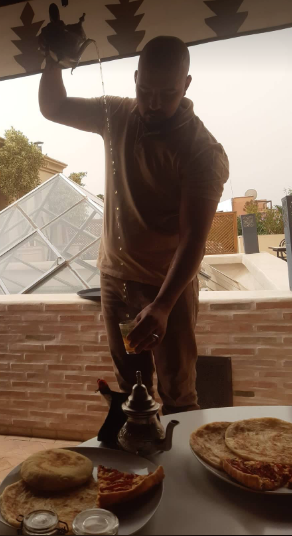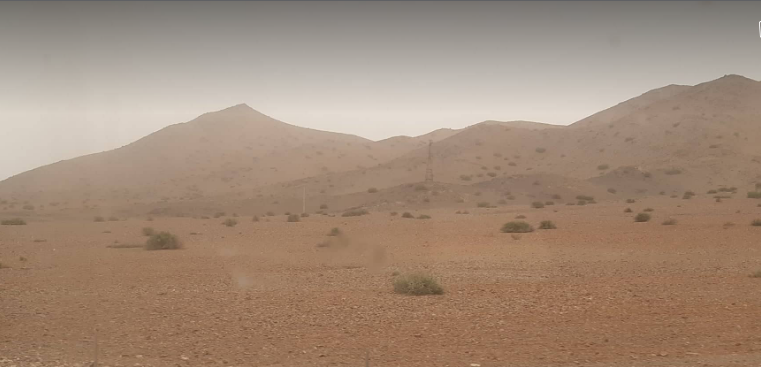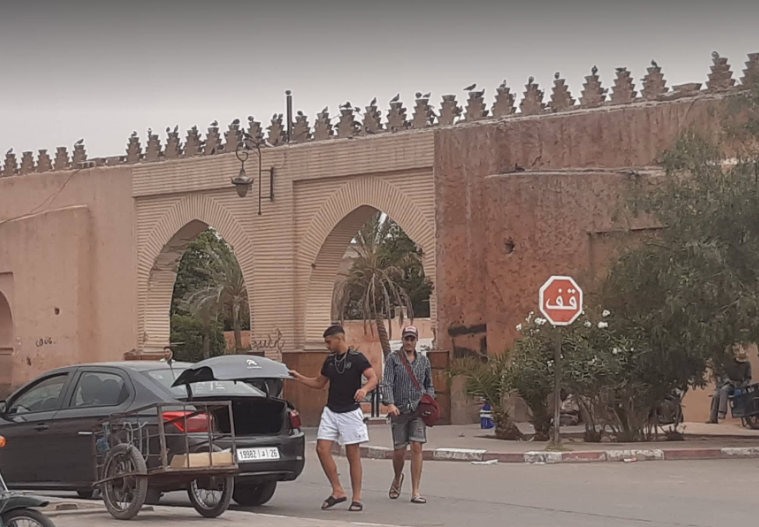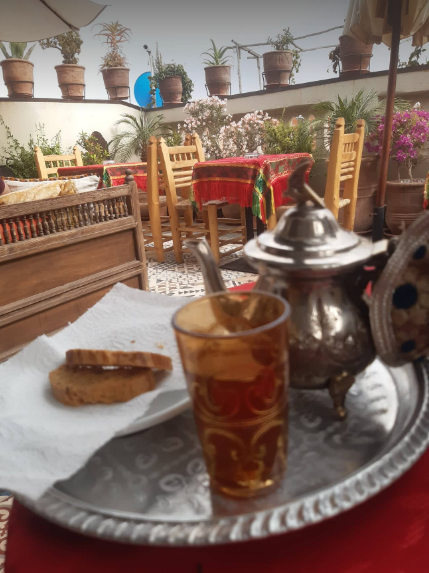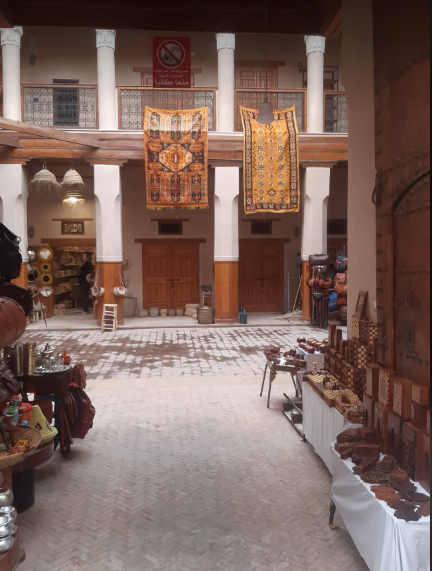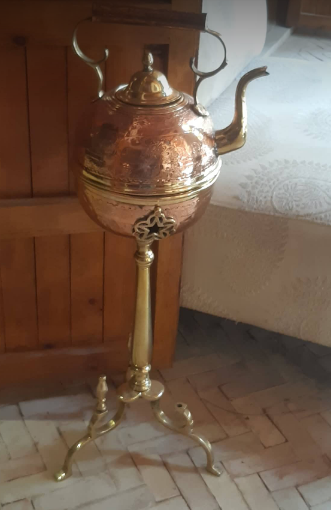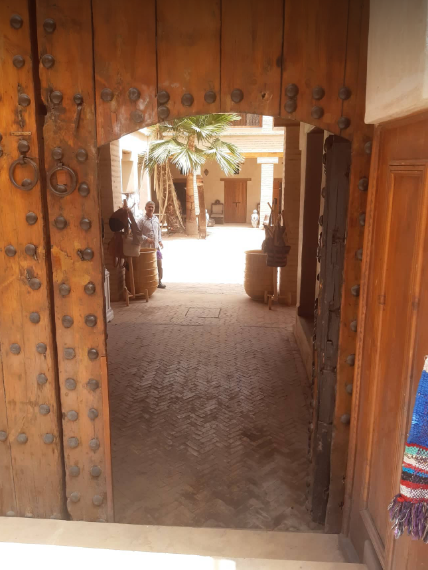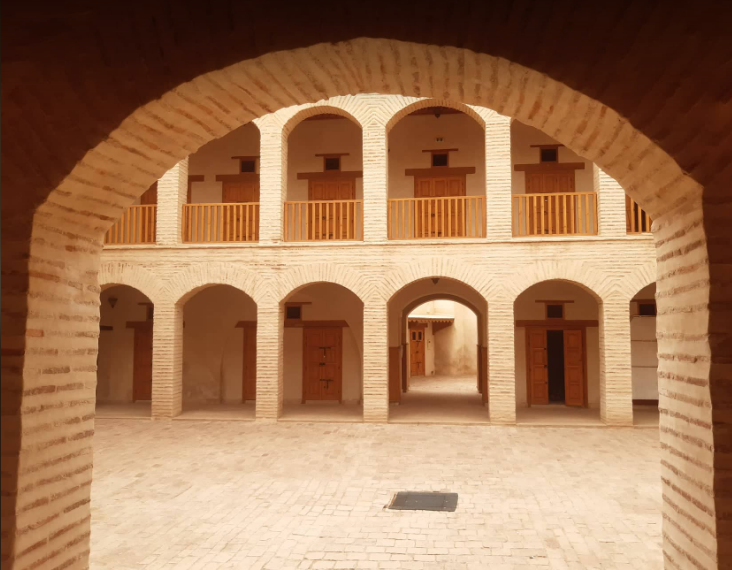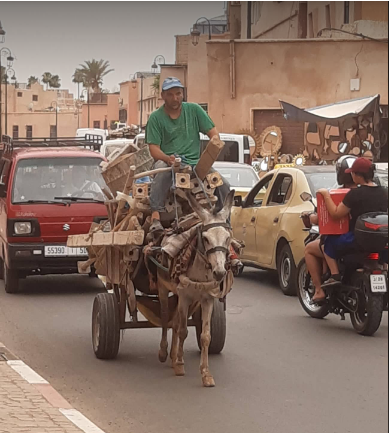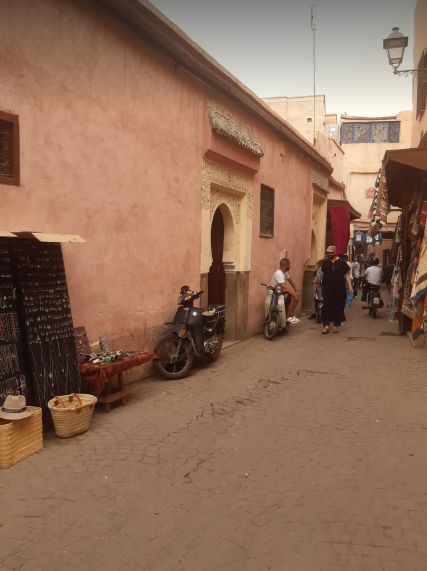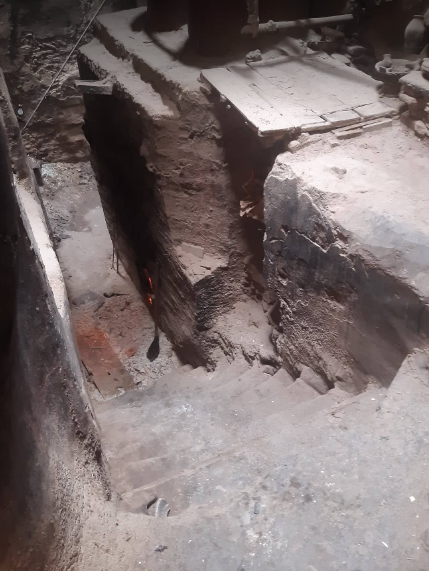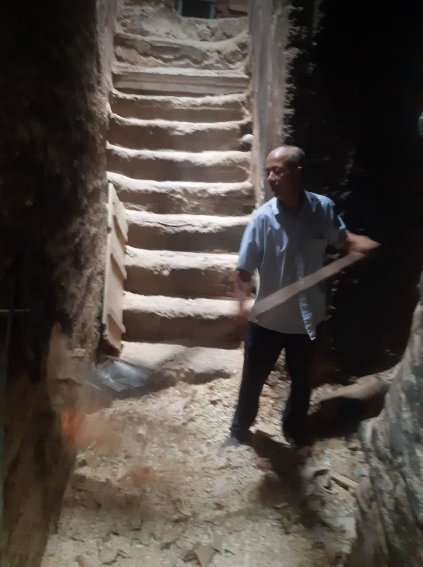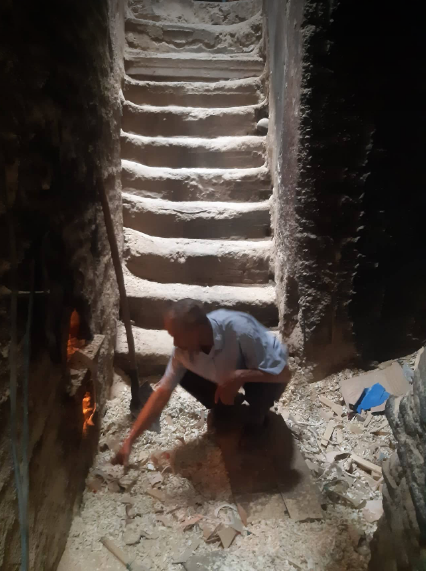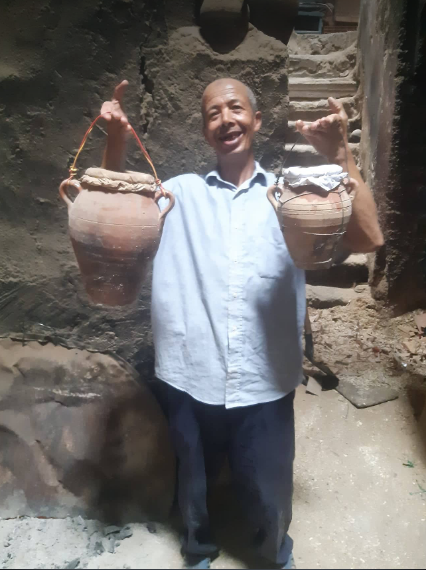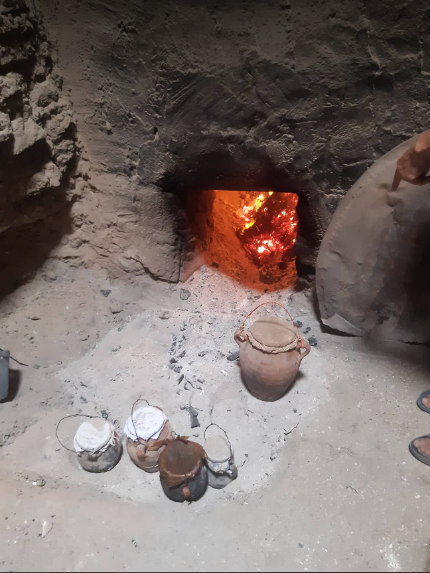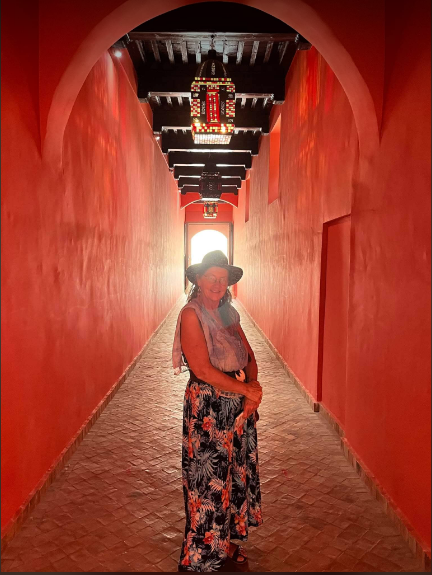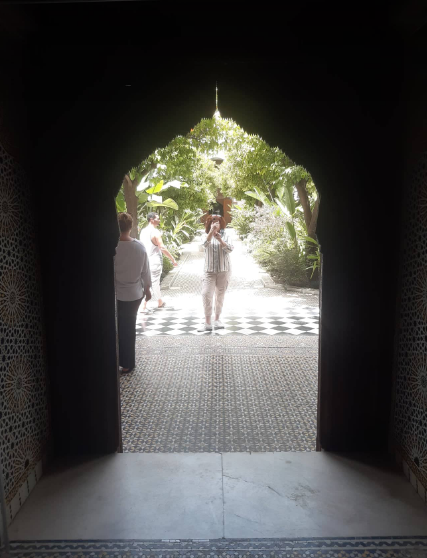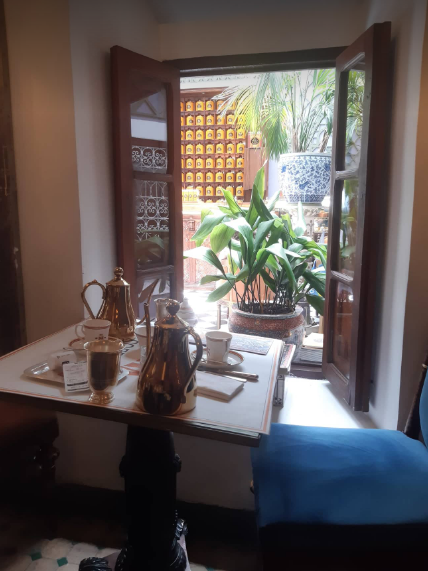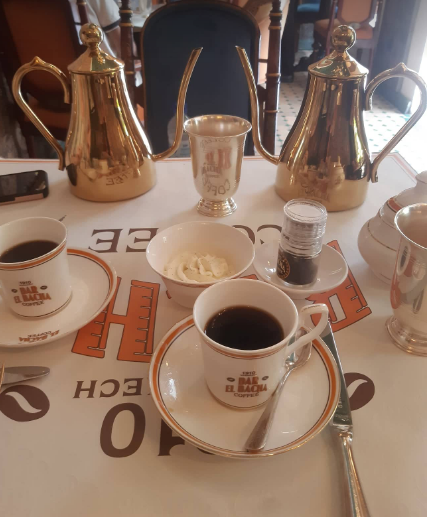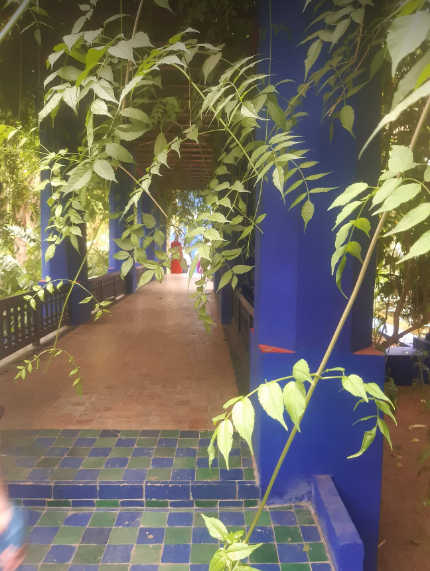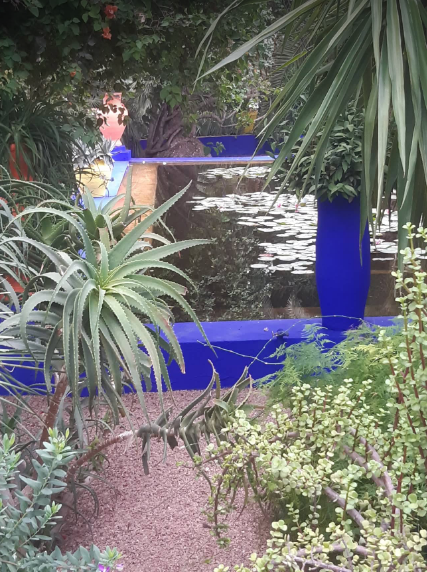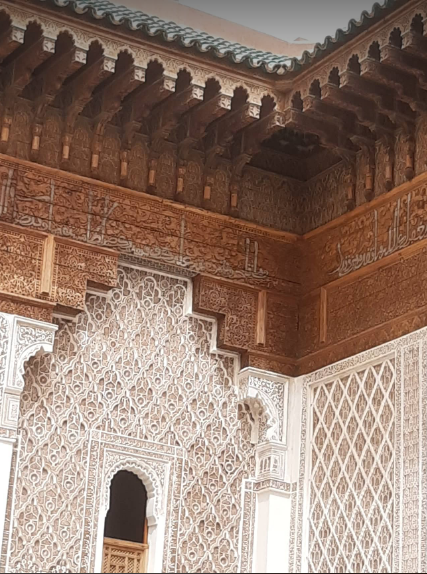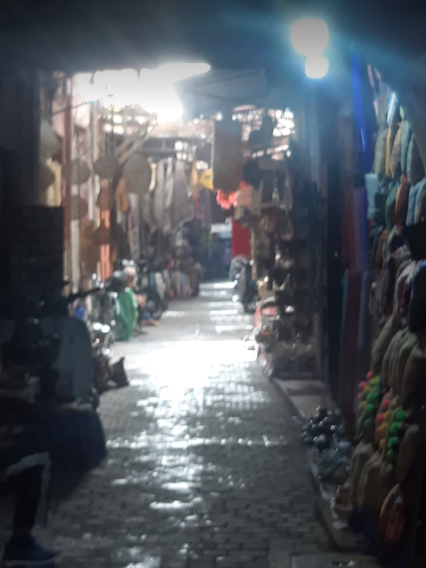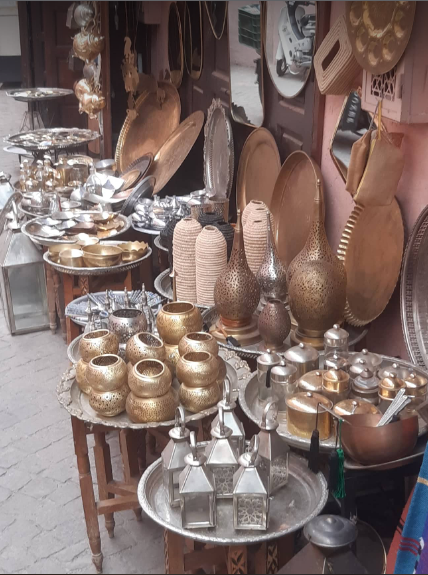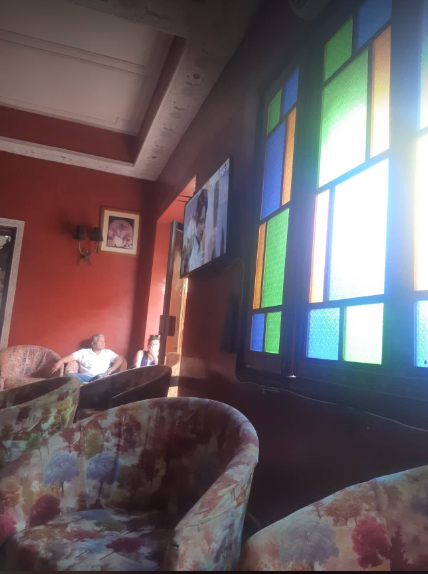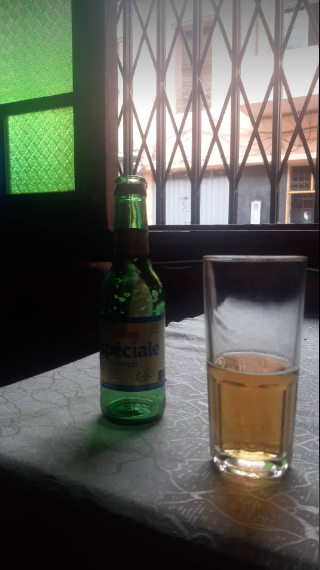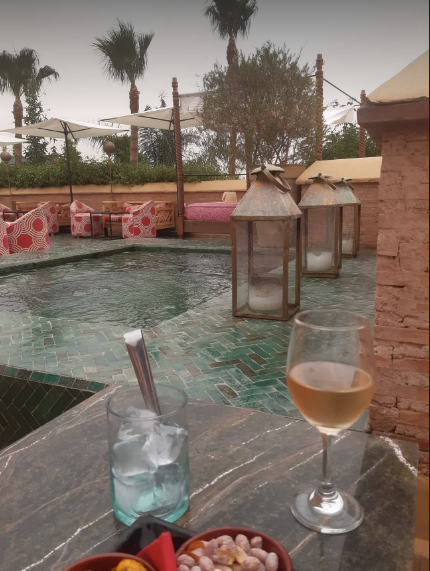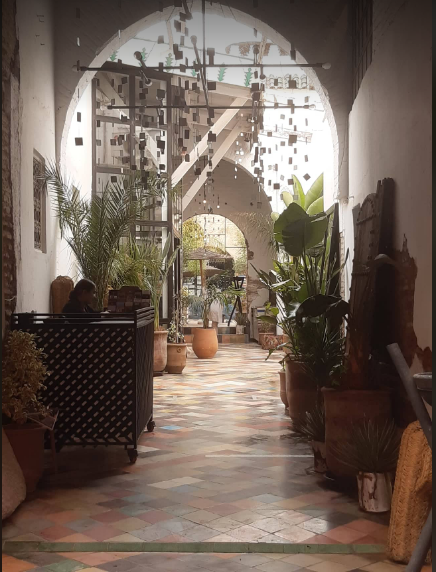A Schizophrenic Lady - Coffee and Camels in Marrakech
Mohamed lifts a small silver teapot til it’s a metre above a tiny glass and pours a steaming spout of tea into the glass in front of me. Not a drop is spilt. But it never is.
This is how tea is served, especially in the south. With a flourish.
Pouring tea, Moroccan style in the south
And then the tea….
In Morocco fresh mint is added to the tea. It’s sweet, drunk in a glass, and absolutely divine. Most countries think their own brand is the best, especially when it comes to food. But with tea, all these tea drinking countries across northern Africa agree: Moroccan tea is the best.
But this one…
The mint is a different variety, tastes more like spearmint rather than peppermint – I believe it’s called verbena. It is refreshing. It is to die for!
So…
What is Marrakech?
The train – just over 5 hours from Tangier – makes its way through barren fields of stones pockmarked with small scrubby bushes. How does anyone make a living out of this? Instead of tourists it used to be the camel trains laden with goods for sale. Marrakech was the first significant town heading north from the Sahara. Always a trading outpost.
I imagine being hot and dusty, plodding through this on a camel train after crossing the Sahara. I wonder what I might be thinking.
My town of Tangier is a tumble of white buildings. Fes is an intriguing maze of old medina streets. Chefchaouen is blue.
Marrakech is red.
Red city walls, red gateways, red buildings, and red spatters of dust on unwashed cars. By red I mean the lovely warm terracotta colour of almost every building and construction. Even the dusty streets seem red.
One of the 16 gates on the city wall. Even the road looks kind of red.
After an evening of the best tajine so far in Morocco (a stew of meat and vegetables – this one a lamb and prune one) – on the rooftop of the Café des Épices restaurant, and another excellent breakfast spread of Moroccan flatbreads, yoghurt, fresh cherries, olives and omelette, wonderful as the mint tea is I am craving a good coffee, and I’ve been told of a place that is not to be missed. El Bacha museum and coffee shop.
Tea on the rooftop of Dar Ben Youssef hostel - a part of the welcome everywhere.
I set out with my friend Ljiljana.
In a medina, wrong turns are the treasures. Every meandering street in this maze has another surprise. Marrakech especially is full of foundouks – old inns or caravanserai.
Shops with carpets and other goods now reside in the old dormitories and rooms of the foundouks.
Now used for the dozens of little shops – beautiful boxes in metal, ivory and wood, silver and copperware so shiny they could do for a mirror, a kettle on its own little stand of coals, rugs and clothes hanging in gay ceremony from the balconies.
Freestanding copper kettle, the bottom half is a brazier for the coals to keep it hot.
A foundouk is a grand courtyard ringed with a two storey columned balcony. The massive wooden gate, which can be studded or carved, is big enough to allow through the camels and all their various sizes of carts and baggage.
When closed, these doors contain smaller people sized ones set within them – and often with a good lip maybe one foot high to step over (to keep out the mischievous djinn).
View into a foundouk just setting up its shops for the day. We are looking through the small door which is open, in one half of its huge pair of wooden doors, these ones studded.
Once inside the camels inhabit the huge central courtyard, a series of rooms and dormitories opening off the surrounding balcony. The doorman proudly tells me that this one has been here since the 6th century, even before Islam arrived (two centuries later).
A foundouk, showing the courtyard where the camels rested. The doors on the balcony and downstairs were rooms.
All I can think of is the smell – hot camels and fresh camel dung, especially if the aromas at the various horse and carriage stalls around Jemaa el-Fnaa Square are anything to go by.
Marrakech transport - donkey and cart. It did not look as if the wealth flowing into the medina from tourists also flowed outside the medina to the rest of Marrakech.
What a fun job that must have been – shovelling up the piles of camel dung each day.
But we still have our mission – our hunt for coffee.
Retracing our wrong turns we are back on the right direction for el Bacha. (said Basha, the French way, like Marrakesh). We pause in front of a man sitting on the ground. He fixes a stick on a spinner which he holds firm with his toes, spins it moving a string bow backwards and forwards with one hand, his other guides a chisel.
I watch to see what he is doing. The stick transforms, taking on a life of its own as the man deftly creates indents and ridges.
Manipulating the stick between his toes and his chisel in one hand, spinning it via a string bow in the other, he carved out the pendent in about a minute.
A moment later he has carved a wooden ring spinning freely around the stick.
Fascinated with his dexterity and finesse, I watch the magic before my eyes. Within seconds he creates a smooth and beautiful little wooden token, similar to his chess pieces.
4-5cm long, a free spinning ring in the middle, he did this in about 60 seconds, using his toes as easily as his fingers.
With a flourish he finishes, adds a hole and a thread, and I now have a new pendant hanging around my neck which I think is exceptional in its beauty.
Each of us with our new pendants, Ljiljana and I retrace our steps yet again – since this was another mistaken street and we still have our coffee to find.
A few more corners and wrong turns…
Another typical red street in Marrakech - an unlabeled door set in a blank red wall - no clues to what I am about to find.
I n the blank street wall there is a doorway with steps leading down. They are steep and don’t seem to be leading anywhere.
On the near side of the red wall on the ordinary street, these steps seem to be leading down to nowhere.
Curiosity gets the better of me. I peer around the corner. An old man grins at me and explains.
Hammam.
This part of the world (too – because Japan and Russia have theirs as well) has a bath culture. Those details for another time, but the locals will have a hammam bath at regular intervals – once or twice a month to clean their skins and refresh their souls.
As I nod in understanding the old man invites me down to look. I negotiate the steps which feel precarious, taking me down into a deadend. My mind slips to documentaries on Jack-the-Ripper and serial killers – I’ve seen far too many!
Feeding the fire with wood shavings (not dead bodies, as I had feared)
But this man is in charge of keeping the hammam fires stoked to heat the water and rooms of the hammam.
At the bottom of those steps, the man checks his fire.
In Marrakech there is an added curiosity, a local stew called tanjia. The meat is slow cooked in a terracotta pot for 4 to 5 hours, brought from the home to the hammam to sit in the ashes and be collected later.
Two clay pots which will be collected in a few hours for dinner by their respective households.
He pulls aside a cover to show me the red hot ashes into which the pots will be put to cook - beef slow cooked in preserved lemons, and spices like ginger, cumin and ras al hanout, the original crockpot.
Around the corner in the deadend, instead of Jack-the-Ripper’s collection of bodies I find a bunch of clay pots sitting in ashes waiting for their designated time in the furnace where they will cook for 4-5 hours before being collected. I tried one - it was yum!
Retracing our steps yet again we continue on our quest for the coffee. This time we are successful.
The entranceway into El Bacha.
We arrive at El Bacha, a grand home built by an important official in the early 1900s and later restored, now used as a museum. The rooms and garden and architecture and intrinsically decorated ceilings are superb.
Looking out at the garden, taking a photo of Ljiljana taking a photo of me inside.
But the real treat is in the coffee shop itself.
The coffee menu is a book. The varieties of coffee worldwide with their descriptions three lines long, reading more like a somelier’s description on the back of a wine bottle.
View from inside the coffee shop, looking onto the courtyard where you can see just some of the yellow tins containing the coffee types and blends from all over the world on the shelves.
Rich rainforest fruits – depth of silky smooth dark chocolate – fruity bouquet with hint of almonds and apricots…
I choose the Montecristo, and Ljiljana the Rio Bravo.
The coffee comes in shining and elegant brass pots with whipped cream and delicate crystalised coffee sugar. The waiter pours from the long serpentine spouts with the same flourish as our breakfast tea, and we sit in the most glorious café-garden-courtyard for a sublime retreat from the chaos of Marrakech.
El Bacha coffee, ready for the cream, sugar and shavings of chocolate.
What is Marrakech?
Marjorelle Garden arbour bridge which leads across a pond - tranquil and calm haven within the chaos.
It is the amazing turquoise and azure garden of tranquility owned by Yves St Laurent, a small oasis of calm - with a very big entry fee.
We are hot and tired. As so many before us, we pay it. It looks cool and beautiful, and at least we can sit for a little.
Some have sat and played cards, chattered, or just rested. We circled the garden.
That was quick, I say.
Ljiljana just shrugs her shoulders. We haven’t had our money’s worth yet. Let’s go round again.
Doing anything but act our ages we reinvent the garden.
This frog is singing for us - there’s another 5 dirhams of value.
This arbour bridge is so pretty, I think we cross it three more times. There’s another 20 dirhams!
Again Marrakech has done the unexpected. The garden has become one of my favourite memories of Marrakech.
Marjorelle Garden pond, where we found the frog that sang for us.
What is Marrakech?
It is the Marjorelle Garden, the rabbit warren of hallways and small rooms which were once the Ben Youssef Madrasa – the biggest and most important Islamic school in Morocco built in the 14th century, a library and other buildings and museums with the most incredible ornate decorations.
In Morocco, remember, always look up!!
The detail in the carved marble in the Ben Youssef school courtyard is extraordinary.
It is the narrow and crowded alleyways of shops filled with everything, the bargaining for endless colours and items for sale – I buy earrings, something I can carry easily in my backpack. But I could choose carpets, cloth, clothes and daypacks, pottery, silverware and copperwork, antiques, leatherwork belts or bags, woodwork and magic boxes or chess sets…
It is also an endless stream of speeding motorbikes which zoom past, missing us by millimetres, shopowners demanding our attention as if we have offended them, crazy prices and scams. We learn to move just slowly enough to see things without having to stop and risk being caught by a repeated conversation demanding that we buy their goods.
And then there is Jemaa al-Fnaa square. A different animal by day and by night. The intensity of everything is at first a thrilling adrenalin buzz.
Jemaa Al-Fnaa Square. A photo doesn’t give you the piercing sound of the pipes of the snake charmers, the drums or the traditional gnawa music, the hubbub of people selling food and drinks, paintings and t-shirts and henna…
By mid afternoon the food stalls start going up, changing the face of the square – dozens of identical restaurants lined up like soldiers. Walking past them is a frenetic barrage of people jumping in front of us – You look hungry, eat here!
No, I’ve just eaten.
You look hungry, eat here! No, I’ve just eaten. You look hungry, eat here! No, I’ve just eaten. You look hungry, eat here! No, I’ve just eaten. You look hungry, eat here! No, I’ve just eaten.
On stopping at one on the first night, the food bought was marginal quality with inedible chips, small plates for mega prices, and extras like bread and olives – normally free extras in Morocco, but this time every single plate is charged for.
Even after this they “miscalculate” the bill and added 30 dirhams “by accident”.
What is Marrakech?
Now jaded we move through the square, frenetic in its energy. Snake charmers with cobras and pipes, monkeys on chains, the beautiful gnawa music which reminds me that I am indeed in Africa, but marred by the scowl when I don’t offer enough coins to suit him even though I give him 5 dirhams instead of the usual 1 or 2 that is standard. People jumping in my face from all directions.
A juice. 10 dirhams. Freshly squeezed. Two women jump in front of us so we can’t move – we do henna – we will ‘tattoo’ your hand for you by drawing traditional patterns in henna ink (which wears off in about 2 weeks).
No, thank you.
I am hot and just want a bit of quiet. There is a haven up ahead, the only place in the medina I am told which sells alcohol, Hotel Tazi. Sometimes a refreshing mint tea isn’t quite enough. I imagine a pleasant space for tourists, bar stools and music, an oasis in high demand. We need a little calm.
I try to get my purse to pay for the juice.
One of these women grabs my wrist and starts drawing with the henna.
The juice isn’t the 10 dirham one I asked for but a big one at double the price.
No, I say, I don’t want the henna just now. No fee she says, for free, and keeps drawing.
I pay for the juice, trying to grab a dropped 100dh note while dodging aorund the henna lady still gripping my arm.
Just give what you want, she says.
“No,” I say. “I said no.”
The orange juice is watered down
‘I have children to feed.’ She motions putting food to her mouth
Against my better judgement I give her a 10 dirham coin for the henna I didn’t want, and try to pull away.
She jumps back in my face.
‘That’s not enough. You’re stealing from me.’
I pull back. Now I am yelling. “I said no!”
The henna drips across my foot and sandal. My arm is covered in goo which is a childish scribble compared to the usual beautiful patterns. I am worried the sludge will stain my clothes
The two of us flee.
Sellers jump at us and yell in our faces. Cobras appear, monkeys sneeze and dance, people grab, whine, plead, whistle….
We make it to the bar. Rather than my imagined elegant oasis for tourists, It is an out-of-date club decorated to be more comfortable for those more interested in bingo and pokies.
But we have our beer, and I get a bottle of red. We brace ourselves for the trip back the hotel via Jemaa el-Fnaa Square.
Then after all the turmoil the chameleon that is Marrakech brings us an evening show. She puts on a lightning display across the night sky. We lie back under umbrellas on the rooftop of our riad with our wine and lazy chatter, to a backdrop of lightening and an occasional spatter of rain to cool the air. The calm returns to a beautiful night.
What is Marrakech?
The next day I am tired and it feels hotter – though it is only 36 degrees. Today Ljiljana has left. It is now just me. I do not feel like facing the square and the street sellers today. The shops and goods are an endless stream of feasting for the eyes, but the people and energy can be draining.
I make my way to an expensive hotel just outside the medina – El Fenn – elegant and beautiful. On the rooftop I order a chilled rosé, slip off my dress and slide into the small pool.
This is sublime. This is a piece of heaven
I wet my head and lie back. Peanuts and chili olives, chilled rosé and bucket of ice, soaking in the cool water, the heat the dust and the crazy dissolve in bliss.
This – the magnificent food, the frenetic square, the panorama of colours and sights and the assault on the senses, the intensity and rawness of life, the silly fun in beautiful garden oases, the motorbikes and henna scammers and the glorious and detailed architecture, endless surprises, the pockets of tranquility.
Marrakech is all of this.
There is something about the place which is pure magic. It has probably always been some version of this since it has always been a market town and trade centre.
It is crazy and it is magnificent. It is every bit as exotic as it sounds – an outpost on the edge of the Sahara.
It is not a place to be bypassed.
A statue through the doorway of a hotel I passed.
June, 2022
